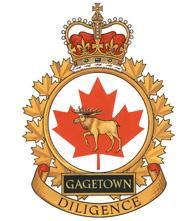From 1968 to 1999, Canadian Forces Base (CFB) Gagetown experienced a period of synergy and unification. On February 1, 1968, the Canadian Forces Reorganization Act unified the Royal Canadian Navy (RCN), the Canadian Army and the Royal Canadian Air Force (RCAF) into a single service—creating the Canadian Armed Forces.
Following the unification, CFB Gagetown—as it was then called—saw the three once separate elements working together in cohesion, with RCN and RCAF personnel adopting administrative and supportive positions throughout the base. Additionally, the RCAF received increased funding post-unification which resulted in the establishment of 403 Helicopter Operational Training Squadron. According to Canadian Army Aviation the squadron was initially stationed in Petawawa, Ontario from 1968 to 1971, and was later moved to CFB Gagetown to provide aircrew training for the CH-146 Griffon helicopters.
Under the command of a Brigadier-General, CFB Gagetown’s role evolved to both accommodate various units, and serve as a teaching facility. In the early 1970s, CFB Gagetown saw significant operational changes with the establishment of the Combat Training Centre (CTC) as a formation within the base. The CTC was comprised of numerous schools. This included armoured and artillery training, as well as the infantry school, which relocated from Borden, Ontario, and a tactics and development division which was stood up. In addition, engineers from 22 Field Squadron, reserve armoured reconnaissance from B Squadron, 8th Canadian Hussars (Princess Louise’s) and 422 Tactical Helicopter Squadron, became part of CTC.
The establishment of the CTC also brought major infrastructure changes to CFB Gagetown. According to the New Brunswick Military Museum, the various CTC schools were originally peppered throughout the base. During the 1980s, plans were proposed and approved to transform a portion of the base into a teaching complex, with the aim of centralizing the CTC. On June 17, 1992, the much-anticipated construction of building J-7, the Armoured School Squadron Headquarters, was completed. Building J-7 allowed the schools to regroup under one roof and focus on training under a unified command. The Royal Canadian School of Military Engineering which had assumed responsibility for training the entire Military Engineering Branch under unification in 1968 also moved to CFB Gagetown in 1997, when CFB Chilliwack was closed.
Following the unification of the Canadian Armed Forces, CFB Gagetown operations shifted towards the idea of coming together and collective strength. These concepts would later be critical for international peace efforts and combatting terrorism.
2Lt Rachel Tapley


